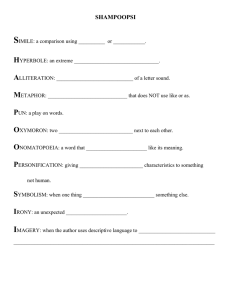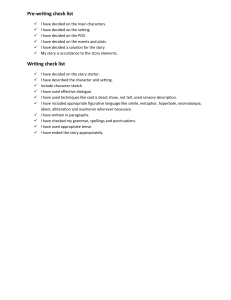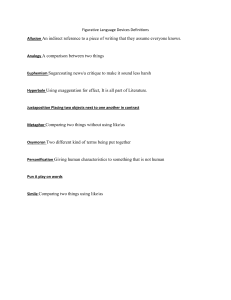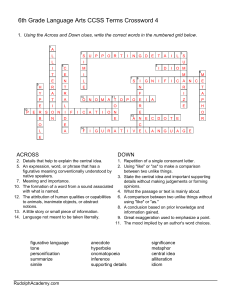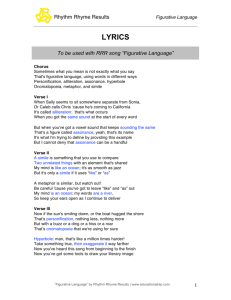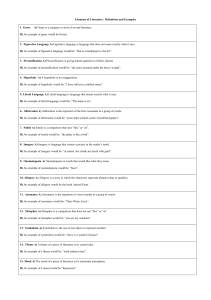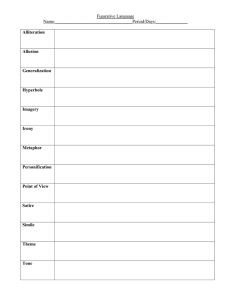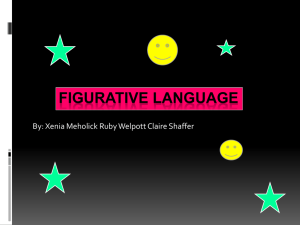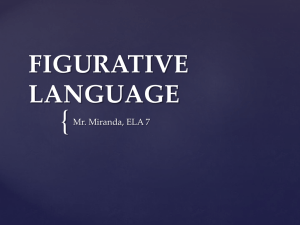File
advertisement
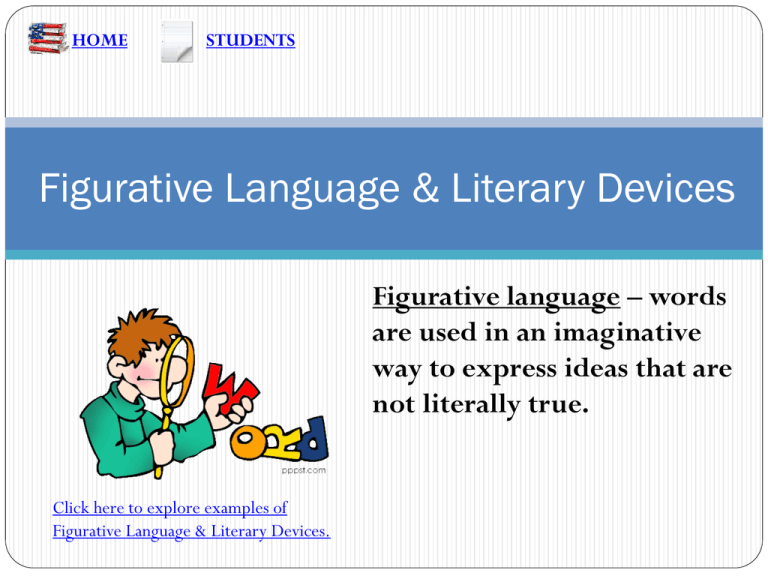
HOME STUDENTS Figurative Language & Literary Devices Figurative language – words are used in an imaginative way to express ideas that are not literally true. Click here to explore examples of Figurative Language & Literary Devices. metaphor Simile Allusion Personification Onomatopoeia idiom hyperbole alliteration oxymoron pun Symbolism assonance imagery irony Simile A comparison of two unlike things using the words “like” or “as.” Click arrow to go back… Click arrow to go to next… Metaphors be with you. Metaphor A comparison of two relatively unlike things usually using a form of “be” – not “like” or “as” "As the cave's roof collapsed, he was swallowed up in the dust like Jonah, and only his frantic scrabbling behind a wall of rock indicated that there was anyone still alive". "Christy didn't like to spend money. She was no Scrooge, but she seldom purchased anything except the bare necessities". Allusion A reference made to a person, place, or thing, in mythology, literature, or history. The sun smiled down on us at is traveled throughout the day. The tree danced in the breeze. Personification Giving human qualities to non-human objects Onomatopoeia Using words that mimic sounds My feet are killing me! I have a splitting headache! I’m so hungry I could eat a horse! Hyperbole An exaggerated statement used for effect It’s raining cats and dogs. Let the cat out of the bag. Put your money where your mouth is. You are the apple of my eye. Idiom An expression in which the meaning is not predictable simply from the words it contains Alliteration Repeated consonant sounds at the beginning of words Why is 6 afraid of 7? Because 7 8 9. Pun A play on words Oxymoron Expression that combines two opposing ideas Common Symbols in Literature dove: peace ice: death spring: youth, birth, life water: birth, rebirth winter: death, dying, old age eagle: freedom, liberty, strength skull: death rose: love, beauty crown: wealth, royalty wedding ring: love, commitment cross bones: death, danger sunrise: new start, beginning full moon: danger, weirdness autumn: middle age, maturity Symbolism One objects stands for something else It was a sweet treat for the athlete to meet, greet, and defeat her opponent. Assonance Having alike sounds in the middle of words Imagery Language that appeals to the senses: sight, smell, touch, taste, or hear Irony Conveying the opposite of the expected or implied meaning
